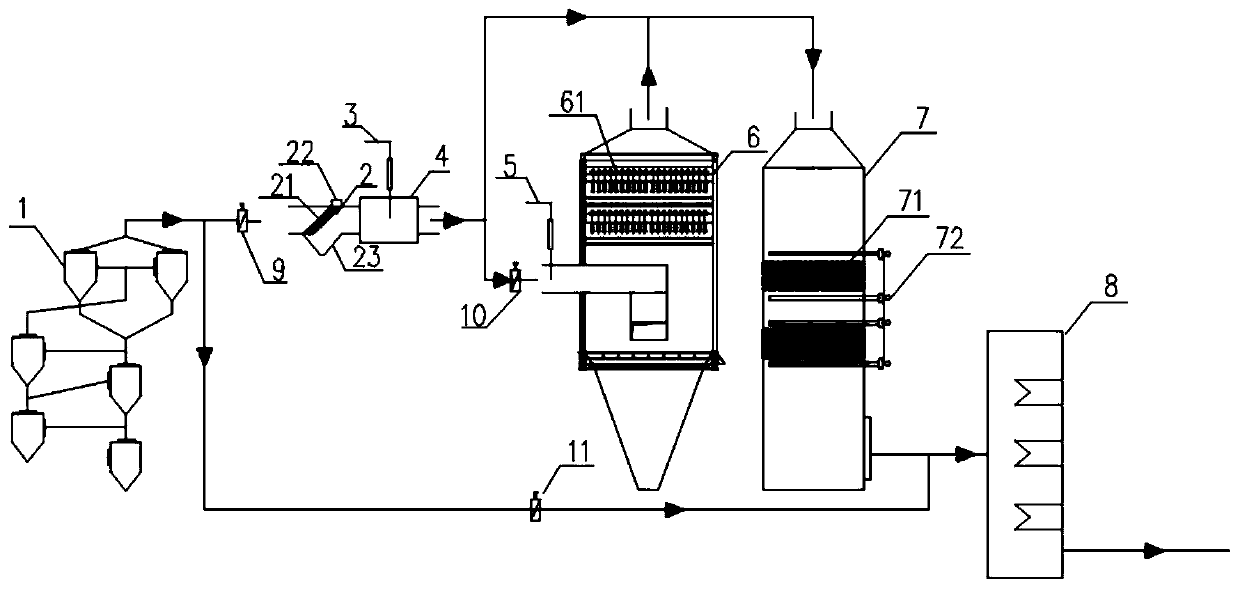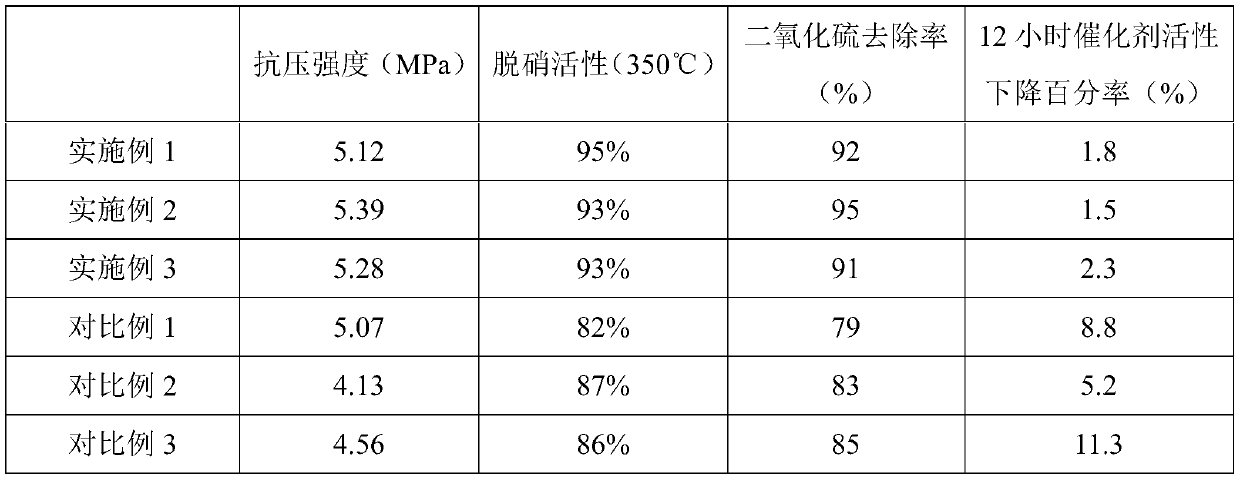Catalyst for cement kiln flue gas SCR denitration and denitration system
A cement kiln and catalyst technology, applied in the field of flue gas denitrification, can solve the problems of difficult to achieve ultra-low emission standards, easy wear and poisoning of catalysts, and high content of particulate matter at the inlet, and achieve long-term stable operation, good activity maintenance, and reduced particle concentration. Effect
- Summary
- Abstract
- Description
- Claims
- Application Information
AI Technical Summary
Problems solved by technology
Method used
Image
Examples
Embodiment 1
[0030] The catalyst for SCR denitrification of cement kiln flue gas in this embodiment includes the following components in parts by weight: 20 parts of silicon carbide, 5 parts of metal oxides, 3 parts of vanadium-titanium composite oxides, 1 part of binder and 0.5 part of lubricant agent.
[0031] Among them, the metal oxide is lanthanum oxide or cobalt oxide, the vanadium-titanium composite oxide is titanium dioxide / vanadium pentoxide composite oxide, and the binder is hydroxypropyl methylcellulose, starch, carboxymethylcellulose or polyethylene One or more alcohols, and the lubricant is glycerin or tung oil.
[0032] The preparation method of this embodiment comprises the steps:
[0033] S1. Carrier preparation: add silicon carbide, metal oxides, part of the binder and part of the lubricant into the ball mill at the same time for ball milling for 2-4 hours, and grind until the particle size is 200-400 mesh to obtain the catalyst carrier;
[0034] S2. Add the catalyst car...
Embodiment 2
[0041] The cement kiln flue gas SCR denitrification catalyst of this embodiment is roughly the same as that of Embodiment 1, the difference lies in the content of each component, specifically as follows: 30 parts of silicon carbide, 10 parts of metal oxide, 5 parts of vanadium-titanium composite oxide, 2 1 part adhesive and 1 part lubricant.
[0042] The preparation method of this example is exactly the same as that of Example 1, and will not be repeated here.
Embodiment 3
[0044] The cement kiln flue gas SCR denitrification catalyst of this embodiment is roughly the same as that of Embodiment 1, the difference lies in the content of each component, specifically as follows: 50 parts of silicon carbide, 15 parts of metal oxide, 8 parts of vanadium-titanium composite oxide, 2.5 1 part adhesive and 2 parts lubricant.
[0045] The preparation method of this example is exactly the same as that of Example 1, and will not be repeated here.
PUM
| Property | Measurement | Unit |
|---|---|---|
| thickness | aaaaa | aaaaa |
Abstract
Description
Claims
Application Information
 Login to View More
Login to View More - R&D
- Intellectual Property
- Life Sciences
- Materials
- Tech Scout
- Unparalleled Data Quality
- Higher Quality Content
- 60% Fewer Hallucinations
Browse by: Latest US Patents, China's latest patents, Technical Efficacy Thesaurus, Application Domain, Technology Topic, Popular Technical Reports.
© 2025 PatSnap. All rights reserved.Legal|Privacy policy|Modern Slavery Act Transparency Statement|Sitemap|About US| Contact US: help@patsnap.com


